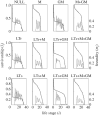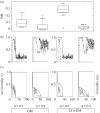On age-specific selection and extensive lifespan beyond menopause
- PMID: 32537201
- PMCID: PMC7277242
- DOI: 10.1098/rsos.191972
On age-specific selection and extensive lifespan beyond menopause
Abstract
Standard evolutionary theory of ageing predicts weaker purifying selection on genes critical to later life stages. Prolonged post-reproductive lifespan (PPRLS), observed only in a few species like humans, is likely a result of disparate relaxation of purifying selection on survival and reproduction in late life stages. While the exact origin of PPRLS is under debate, many researchers agree on hypotheses like mother-care and grandmother-care, which ascribe PPRLS to investment into future generations-provision to one's descendants to enhance their overall reproductive success. Here, we simulate an agent-based model, which properly accounts for age-specific selection, to examine how different investment strategies affect the strength of purifying selection on survival and reproduction. We observed in the simulations that investment strategies that allow a female individual to remain contributive to its own descendants (infants and adults) at late life stages may lead to differential relaxation of selection on survival and reproduction, and incur the adaptive evolution of PPRLS.
Keywords: ageing; kin selection; menopause; population genetics.
© 2020 The Authors.
Conflict of interest statement
We declare we have no competing interest.
Figures






References
-
- Haldane JBS. 1942. New paths in genetics. London, UK: George Allen & Unwin.
-
- Hamilton WD. 1966. The moulding of senescence by natural selection. J. Theor. Biol. 12, 12–45. - PubMed
-
- Medawar P. 1952. An unsolved problem of biology: an inaugural lecture delivered at University College, London, 6 December, 1951. London, UK: H.K. Lewis and Company.
Associated data
LinkOut - more resources
Full Text Sources

